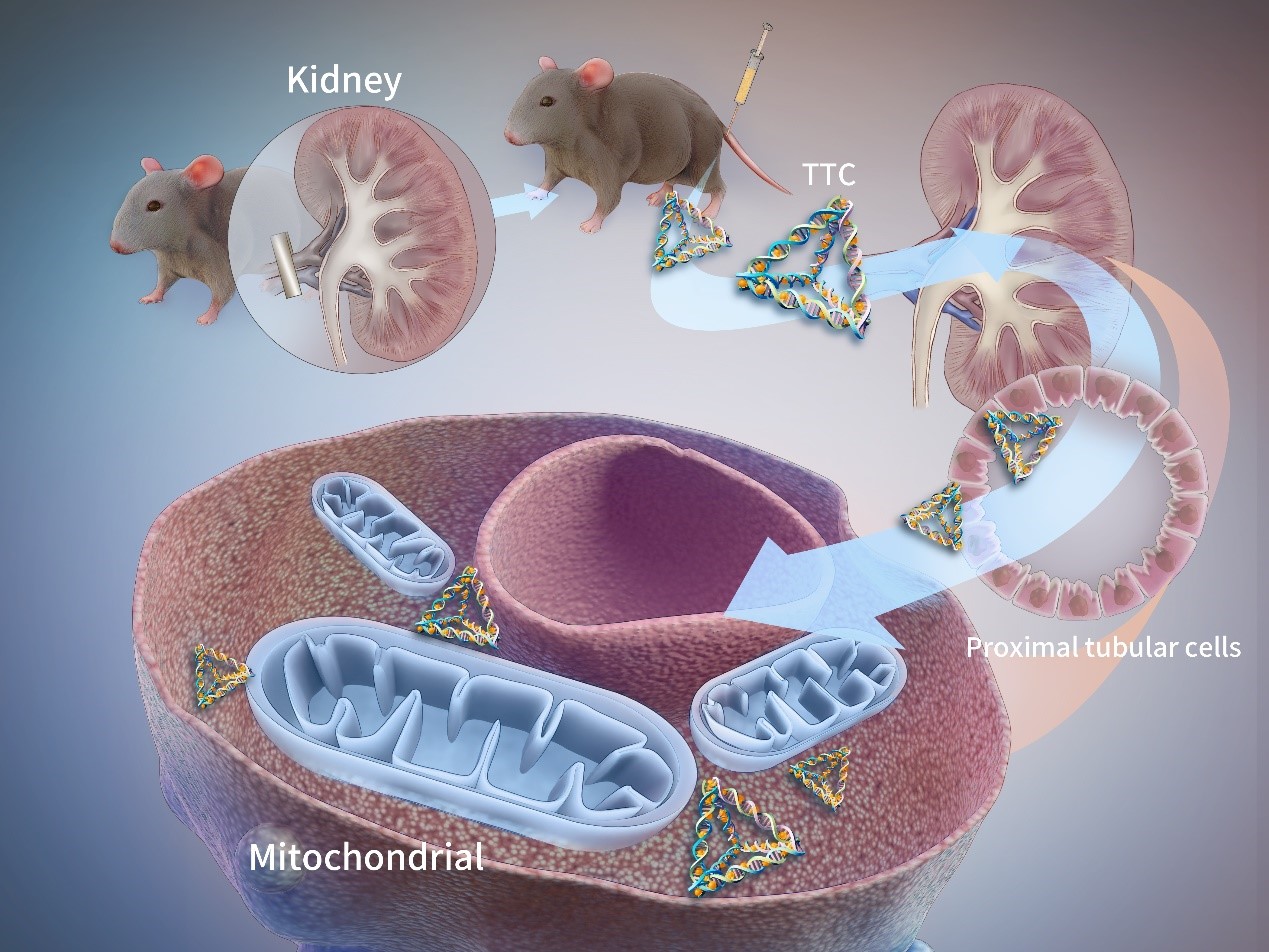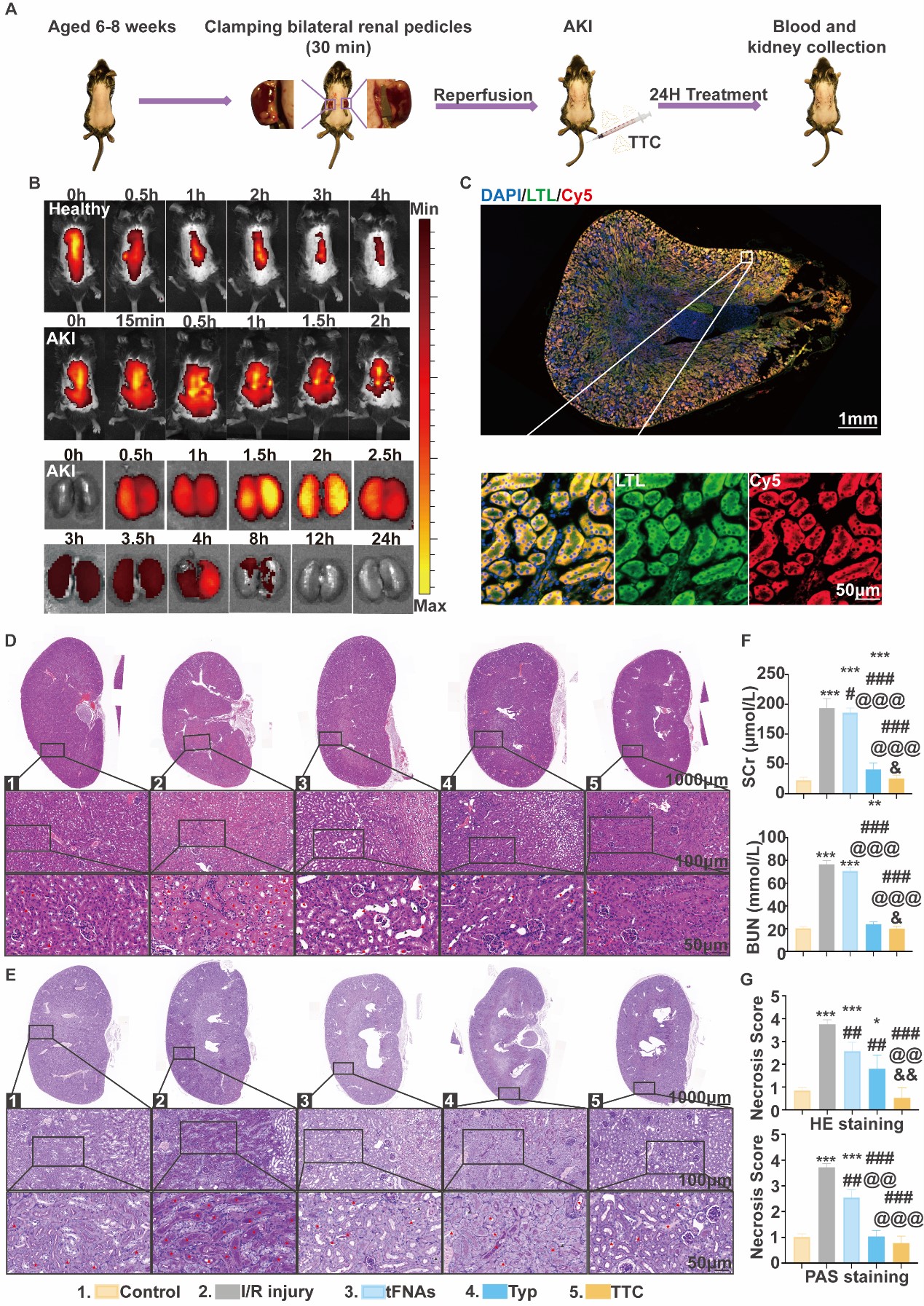Tetrahedral Framework Nucleic Acid and Typhaneoside Complex and Its Use in Preparing Medications for Treating Acute Kidney Injury
2024-06-26
Background:
Acute Kidney Injury (AKI) is one of the most prevalent syndromes worldwide and represents a serious global health issue closely related to Chronic Kidney Disease (CKD) and hospital mortality rates across various regions. The mortality rate for inpatients with AKI is typically 10–20%, and for ICU patients, it ranges from 44.7% to 53%. Even minor kidney function impairments can lead to poor prognosis and affect long-term kidney function. Patients with AKI have a sixfold increased risk of developing chronic kidney disease and a 28-fold increased risk of progression from early chronic kidney disease to end-stage renal failure. AKI serves as both a risk factor for chronic kidney disease and a trigger for its progression. While numerous clinical studies address AKI, there is currently no specific, non-nephrotoxic treatment available to reverse acute kidney injury in the early stages and improve prognosis. Therefore, there is an urgent need to develop novel and effective treatments for AKI.
Cutting-edge Research: Tetrahedral Framework Nucleic Acid-Typhaneoside Complex for Treating Acute Kidney Injury
Pollen from the Typha plant, known as "Puhuang," is a widely distributed aquatic plant with pharmacological effects including lipid-lowering, anti-atherosclerosis, anticoagulant, myocardial ischemia protection, and analgesic properties. Typhaneoside (Typ, CAS: 104472-68-6), a flavonoid component of Puhuang, is a major extract with notable antioxidant stress effects in diseases such as cardiac ischemia-reperfusion injury. However, there are currently no reports on Typhaneoside's effects on acute kidney injury. Like many herbal monomers, Typhaneoside faces limitations such as poor water solubility, low systemic bioavailability, and instability in physiological media, which significantly restrict its therapeutic effectiveness.
DNA nanostructures are characterized by their natural biocompatibility, stable structure, and high bioavailability, making them a popular research topic in recent years. Among these, Tetrahedral Framework Nucleic Acids (tFNAs) are formed by annealing four single-stranded DNAs (ssDNAs) and are easily prepared with excellent stability suitable for a wide range of applications. Notably, due to the double-stranded structure and chemical properties of DNA materials, tFNAs can carry various oligonucleotide drugs, such as antisense oligonucleotides (ASO), small interfering RNA (siRNA), microRNA (miRNA), antimicrobial peptides, as well as small molecule drugs like resveratrol and curcumin. With their negative surface charge and unique tetrahedral framework, tFNAs exhibit excellent cellular uptake mediated by clathrin proteins, enhancing the intracellular accumulation of drugs they carry. Additionally, Chinese patent CN112587542A has previously disclosed the therapeutic effects of tFNAs on acute kidney injury.
Based on the above, our technical team has developed a new nanomedicine system by combining tFNA with Typ, which enhances Typ's stability and cellular uptake efficiency, thereby reducing its biological dosage and improving its in vivo safety. The synergistic effect of tFNA and Typ maximizes the therapeutic efficacy.
Research Methods:
Use AFM, TEM, and PAGE to identify the synthesis of the Tetrahedral Framework Nucleic Acid-Typhaneoside Complex (TTC).
Employ confocal microscopy and flow cytometry to assess TTC's ability to enter human renal tubular epithelial cells (HK-2).
Evaluate TTC's impact on HK-2 cell proliferation using CCK8 assay.
Assess TTC's effect on HK-2 cell apoptosis using flow cytometry.
Use immunofluorescence and Western blotting to investigate TTC's regulation of proteins in HK-2 cells.
Analyze mitochondrial morphology, function, and potential in HK-2 cells using immunofluorescence.
Conduct small animal in vivo imaging to study TTC pharmacokinetics and distribution in model mice.
Evaluate TTC's therapeutic effects on AKI in an ischemia-reperfusion model.
Experimental Results:
In this study, our technical team successfully synthesized the Tetrahedral Framework Nucleic Acid-Typhaneoside Complex (TTC) for treating ischemia-reperfusion acute kidney injury (AKI). This system exhibits efficient dual-targeting capability for both cellular mitochondria and in vivo renal tubules. TTC demonstrates excellent cellular uptake efficiency, reduces mitochondrial ROS, and restores mitochondrial morphology and dynamic balance, promoting mitochondrial repair in cell and animal models. This mechanism also leads to a reduction in cell apoptosis both in vitro and in vivo. Moreover, TTC alleviates renal tubular damage and promotes kidney function recovery in animal models. This research provides a promising treatment approach for clinical AKI and other mitochondrial-related diseases, advancing the application of DNA nanomaterials in renal diseases.
Research Conclusion:
Our technical team has successfully developed a Typhaneoside delivery system for treating acute kidney injury. The Tetrahedral Framework Nucleic Acid and Typhaneoside work synergistically to reduce apoptosis of renal cortical proximal tubular epithelial cells, decrease kidney tissue necrosis, and restore renal function. Additionally, they can prevent renal fibrosis and halt the progression from acute kidney injury to chronic kidney disease, providing a new clinical treatment option.
Published Reference:
ACS Nano. 2023, 8767-8781. IF=17 DOI: 10.1021/acsnano.3c02102




